When I first read this story, “The Emotional Quotient of Soup Shopping
Campbell’s Taps ‘Neuromarketing’ Techniques to Find Why Shelf Displays Left Some Customers Cold” in The Wall Street Journal (WSJ), I found myself talking at the newspaper. Mucking around with labels and the merchandising of soup cans may garner additional sales, but to be truly successful, the sodium issue (perception) needs to be addressed.
Condensed = Salt
I was actually relieved to see a story appearing the next day, about Campbell Soup lowering their sales forecast, that communicate the information I was seeking.
“Campbell announced it will tweak more than 60 percent of its condensed soups, reducing sodium in 23 of them by up to 45 percent. Once complete, nearly half of Campbell’s condensed soups will have sodium levels at 480 milligrams or less per serving, considered healthy by the U.S. government.
Campbell has cut the sodium level in more than 100 of its products – including V8 juices, Prego sauces, Pepperidge Farm breads and its namesake soups – by 25 percent to 50 percent over the past four years.”
Mind you, this information was buried eight paragraphs into the story. That is information needs to be promoted.
So back to the WSJ story, which was actually quite interesting. It talked about how the Campbell Soup Company is relying on new neuromarketing studies — basically, looking into the brain’s role in product preferences– to guide the redesign of its condensed-soup packaging in order to inspire consumers to buy more soup.
The research took place over a two-year period. One of the discoveries was that warmth and other positive attributes that people associated with Campbell’s soup at home evaporated when they faced store shelves. No doubt, nasty store lighting and being overwhelmed with the number of choices played a role here. Nevertheless, Campbell made some tweaks to their Point-of-Sale influencer, the can label:
- Moving the Campbell’s logo to the bottom
- Adding color coding to the top of the label to help distinguish four categories of soup: “taste sensations,” “classic favorites,” etc.
- Using a more modern looking soup bowl
- Losing the spoon! It was deemed unnecessary
- Injecting some steam! Steam was added to help emotionally engage the shopper (it looks warm)
Knowing when to say when…
Apparently, Campbell’s three biggest sellers-chicken noodle, tomato and cream of mushroom, the soup can labels immortalized by Andy Warhol, will remain the same.
Hopefully somewhere, perhaps in a shelf talker and in ads, the lower sodium message will be emphasized.
###
Check out the video that accompanied the article online here:
Read more about Campbell Soup Company:
Seeking Alpha: Soup Tales: Campbell Continues to Lead
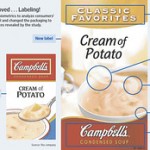
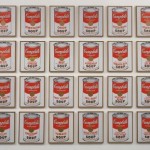


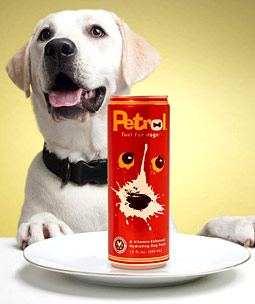


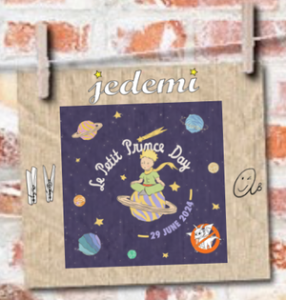

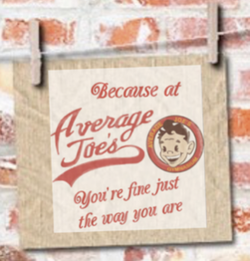




Very interesting. Just saw this post on what Hersey is doing from a POS standpoint (http://www.pennlive.com/midstate/index.ssf/2010/02/hershey_learns_at_retail_store.html).
“For these shoppers to splurge, almost everything has to be perfect — price, packaging, product display — or they’ll zoom past without adding any Hershey’s candy to their grocery carts.”